If churches and museums get boring in the long run, alternatively you can go in search of legends and curiosities that are not very well known but just as interesting, very useful to better understand the city.
Living in Florence, we discovered a lot of interesting and fun things walking through its alleys, so we have been able to devise 15 of these legends!
We will list them below 🔽
Il balcone rovesciato (The overturned balcony)
In Borgo Ognissanti, at number 12, there is a balcony out of the ordinary, with all the architectural elements in reverse. The question arises spontaneously at this point: what is the reason for this stylistic and structural strangeness?
The reason seems to be a misunderstanding between the landlord, Baldovinetti, who wanted a beautiful and imposing balcony, and Alessandro de’ Medici, Lord of Florence, who with an order forbade architectural elements that were too showy and bulky as the streets of the city were rather narrow. But Baldovinetti did not give up his balcony, so he began to ask Alessandro de’ Medici for permission to build the balcony. The latter, exasperated, granted Baldovinetti permission to build the balcony, but on one condition: that it was built on the contrary.
Obviously, Alessandro de’ Medici with this move wanted to discourage ours but, apparently, he did not succeed in his intent… 😂
Il volto scolpito da Michelangelo (The face sculpted by Michelangelo)
Right in front of Palazzo Vecchio, to the right of the access ramp, look into the wall beyond the sculptural group of Hercules and Cacus: if you look closely you will see a portrait on the wall, not particularly finished, of a man in profile 👳. The portrait boasts the signature of Michelangelo Buonarroti, but it is not known precisely who that face belongs to: there are two different legends, contradicting each other but both recognized by popular tradition.
The most famous tells of a man who used to bother the great Buonarroti, harassing him with boring questions and requests that annoyed the master. One day the artist, equipped with a chisel, decided to portray the face of his jammer on the facade of the Florentine palace: legend has it that the artist, bored by the presence of the jammer, decided to sculpt his portrait with his hands behind his back, pretending to listen to his pedantic interlocutor. Although some believe it is a self-portrait of the famous artist since then the mysterious engraving was called “the importunate of Michelangelo“.
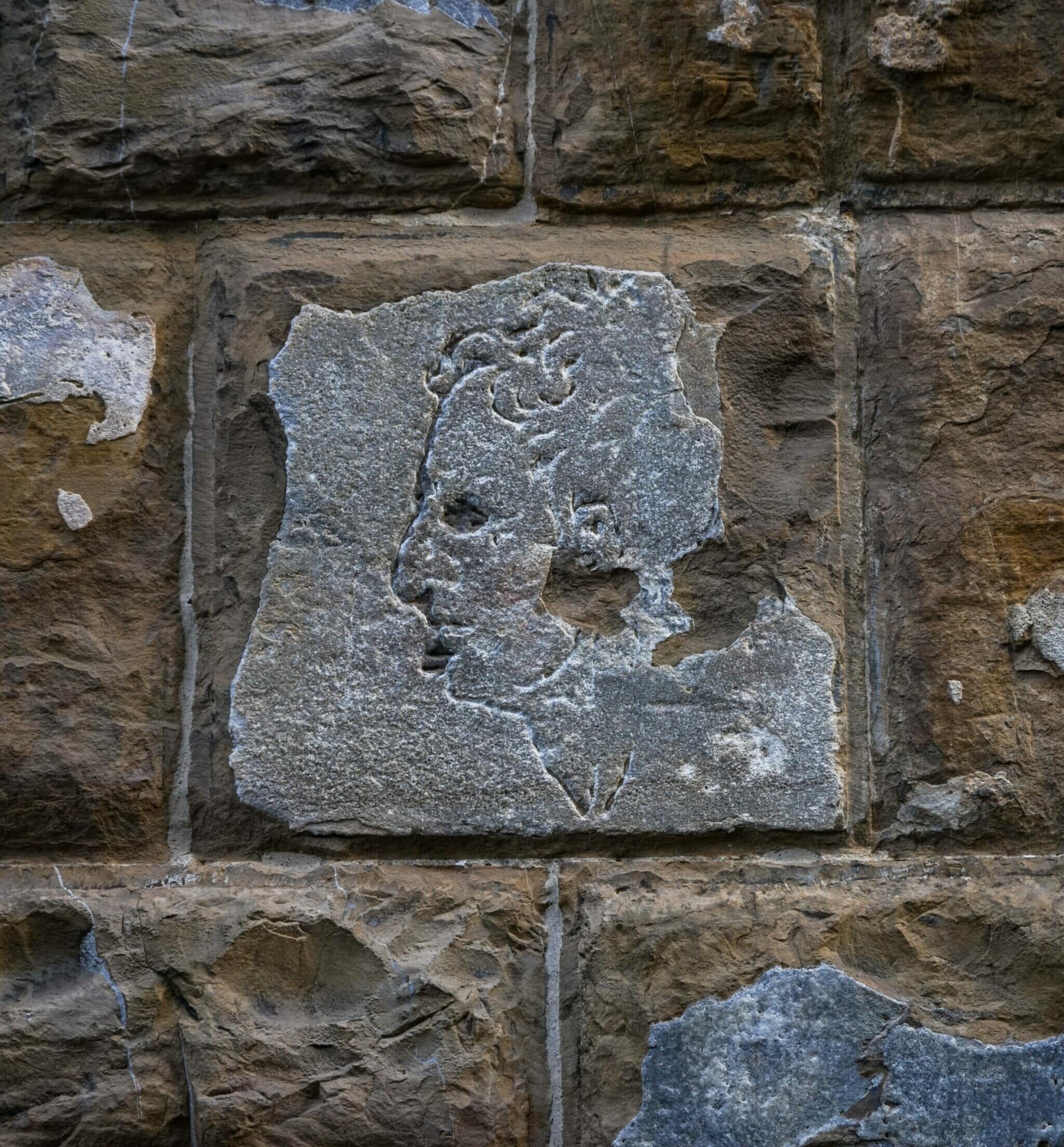
Another version reports instead that Michelangelo, seeing a man sentenced to death pass by on the verge of being executed, was deeply struck by the man’s expression and decided to immortalize his face on the facade. Due to the short time available, Buonarroti chose to carve it right on the stone that was behind him.
Le api che non si riescono a contare (Bees that can’t be counted)
Also in Piazza della Santissima Annunziata there is another curious thing to see.
In the back of the pedestal of the equestrian statue Ferdinando I de’ Medici, in the center of the square, there is a swarm of bees 🐝 arranged in concentric circles with the queen bee in the center (the latter symbolizing the Grand Duchy of Tuscany at the head of which there was in fact Ferdinando I, while bees represent the Florentines). Apparently, being able to count the bees without touching or pointing them is a very difficult, if not impossible, undertaking. Whoever succeeds, legend has it, will be hit by luck.
If you pass by Piazza Santissima Annunziata, try your hand at the witty calculation: but how many bees really are on the monument of the Grand Duke?
La Madonna del Puzzo
At the intersection of via Toscanella and Borgo S. Jacopo there is a niche with a terracotta woman’s head intent on holding her nose, while a mouse runs over her arm. It is the Madonna del Puzzo, the work of the Tuscan sculptor Mario Mariotti to protest against the placement of a garbage can that had been placed in the alley. There are also those who say it was placed there to “sensitize” the uncivilized who used the alley as a urinal.
The dumpster is no longer there but the smell of pee seems to persist…🙊
La Berta
It is located near the cathedral, in Via de’ Cerretani. Take the Promod shop as a reference and look straight ahead: you will see the side of a church, Santa Maria Maggiore to be exact: at a certain point, the petrified head of a lady pokes out of the wall. This is the Berta. How it got up there is still a mystery today 😮.
It seems that this head has been there since 1326 due to the fault (or merit) of the astrologer condemned to the stake Cecco d’Ascoli, following a curse he launched against a woman who, denying him water, had prevented from saving himself from the flames, making a pact with the devil, and telling him: “And you will never get out of there the head”.
Another legend, tells Berta is a fruit seller who gave a bell to the church to be able to warn the workers of the opening and closing of the city gates. This small bust is therefore not a sign of the Florentines’ recognition of the Berta.
More likely this head is one of the remains of the numerous Roman statues used in the Middle Ages to embellish palaces and buildings in the city. In any case, whatever the truth, that woman for us Florentines is “la Berta“.
Il toro cornuto (The horned bull)
By carefully observing the side of the cathedral in Florence, you can see the head of a bovine. What are you doing here?
There are two stories about it, which mix truth and legend.
The first tells of a tribute by the builders to all the towed animals that were used in the construction of Santa Maria del Fiore.
The second sees the head of the bovine as evidence of a betrayal. Legend has it that a carpenter who worked on the construction site of the cathedral had a relationship with a baker’s wife 💕 of whose shop was right there. When the baker discovered the relationship he denounced his wife and lover to the Ecclesiastical Court and the story between the two had to end. The carpenter, however, decided to place the head of a bull in a strategic point of the cathedral so that the baker, seeing it every day, would remember that he was a cuckold 😈.
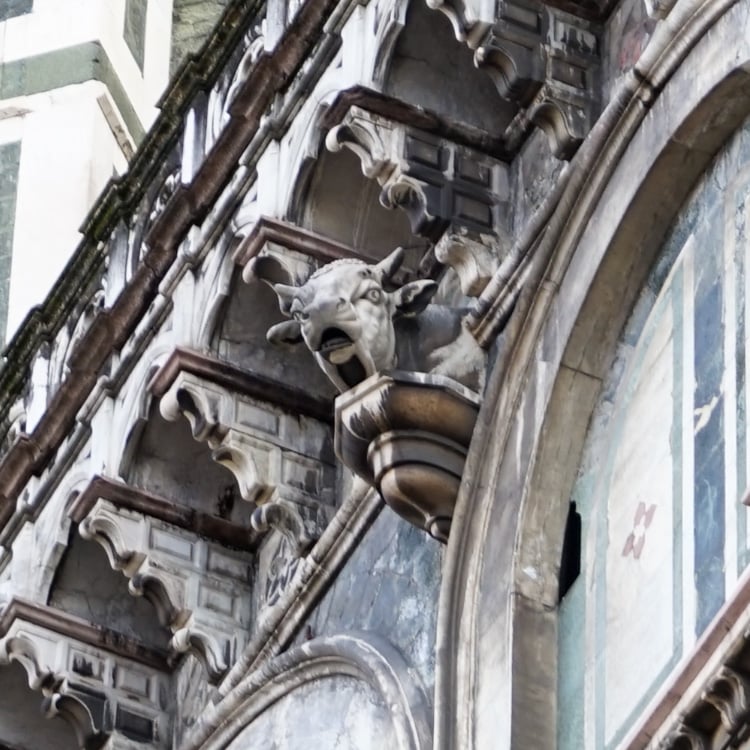
The unusual sculpture is one of the decorations of Porta della Mandorla, the work of Nanni di Banco and other artists that gives access to the top of the dome.
Il diavolo del Giambologna (The devil by Giambologna)
In a corner of Palazzo Vecchietti, between via de’ Vecchietti and via Strozzi, there is a grotesque sculpture depicting a flag-bearer devil. Few, however, see the presence of this mysterious sculpture.
The sculpture was erected by Bernardo Vecchietti, owner of the building, at the point where an episode related to the life of St. Peter Martyr took place. The latter, interrupted while preaching by a runaway black horse, which everyone thought was the devil, managed to immobilize the animal with a sacred gesture. And in memory of this, Giambologna’s little devil was commissioned.
The flag-bearer sculpture that is still in the same corner of the building is not the original, which is instead found in the Terrace of Saturn in Palazzo Vecchio. Art historians, on the other hand, claim that it is a satyr who was part of a lost composition. Whether it’s a legend or a reality, it doesn’t matter: from that corner of the building, the gaze of Giambologna’s Devil is always there to keep passers-by under control!
L’autoritratto nascosto di Benvenuto Cellini (Benvenuto Cellini’s hidden self-portrait)
Under the Loggia dei Lanzi, to be precise behind the statue of Perseus, a bronze 3 meters and 20 high, with the head of Medusa by Benvenuto Cellini, if you look up a little, between the nape of Perseus and the helmet an optical effect allows you to see the face of a man (if there is little sun it is possible that you cannot see very well).
It seems that it is Benvenuto Cellini’s self-portrait!
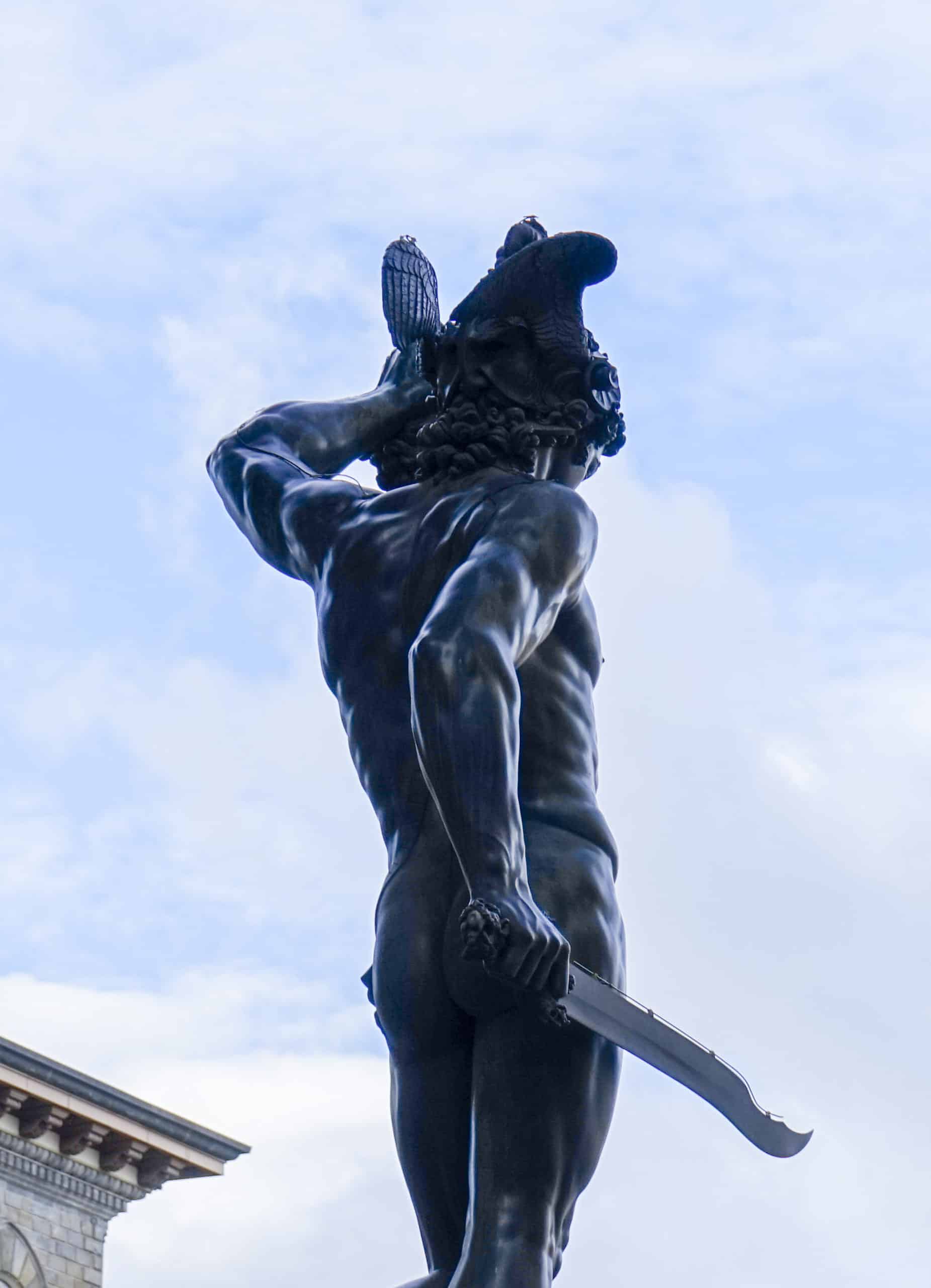
La pietra sbagliata di Palazzo Pitti (The wrong stone of Palazzo Pitti)
In front of Palazzo Pitti, try to look for two more irregular stones in the facade. To tell the truth, it is quite simple to find them, however, for the immensity of the facade, we give you some help: looking at the building, move to the left of the entrance door, immediately after the second window in the lower part you will see a very long stone (it is about ten meters) next to a much shorter one than the others. They were not placed here by chance, but apparently, it was Luca Pitti himself who wanted them. Luca Pitti, whose family was the rival of that of the Medici, was the client of the building and legend has it that he requested that the windows of what would become the family home were bigger than the main door of the home of Cosimo de’ Medici, Palazzo Strozzi and that its courtyard could contain it. To these noble “whims”, another one is added, the one linked to the two irregular stones on the facade: one, the longest, represents his person while the other symbolizes his rivals.
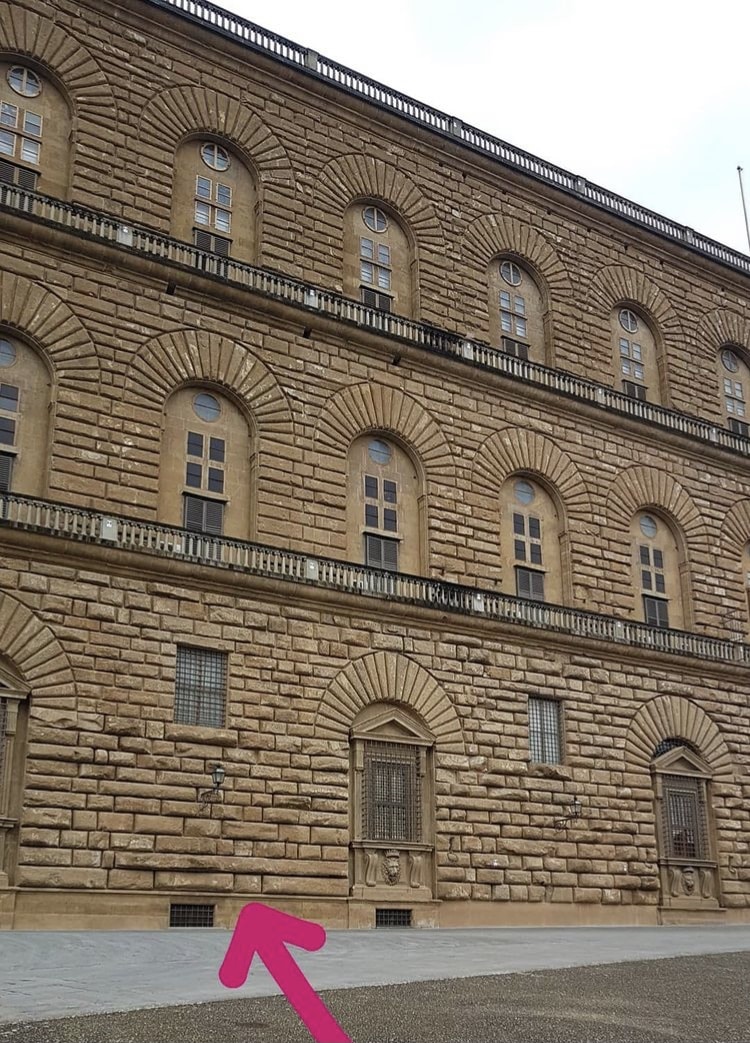
Poor Luca Pitti would have died sooner if he had known that the Medici would have bought his beautiful palace later!
La finestra sempre aperta (The window always open)
In piazza della Santissima Annunziata, right in front of the basilica, there is a building that has a window that is always open. This is Palazzo Grifuni and the window is on the right side. The reason the window is always open is related to a love story 💗. The wife of a member of the Grifuni family, shortly after moving into the palace, had to say goodbye to her husband called to arms. She then stood right in front of the window to check if her husband was returning, which never happened. When the woman died the window was closed but strange phenomena began to appear in the house, the lights went out, the pictures detached from the walls and the furnishings began to move, so it was decided to always leave it open.
Others say that the neighborhood, moved by the sad love story, decided to keep the window always open in memory of the woman who had spent so much time there.
There are also those who say, however, that the room next to the window was that of the lover of Grand Duke Ferdinand I whose bronze statue, in the center of the square, looks right out of the window.
We prefer the first version, that of the Florentine Romeo and Juliet.
I particolari sulla facciata di Santa Maria Novella (Details on the facade of Santa Maria Novella)
When you find yourself in front of the facade of Santa Maria Novella, notice two details that are respectively to the right and left of the entrance door: an armillary sphere and a sundial. The armillary sphere is a model of the solar system formed by rings (the armils), as many as the circles of the celestial sphere.
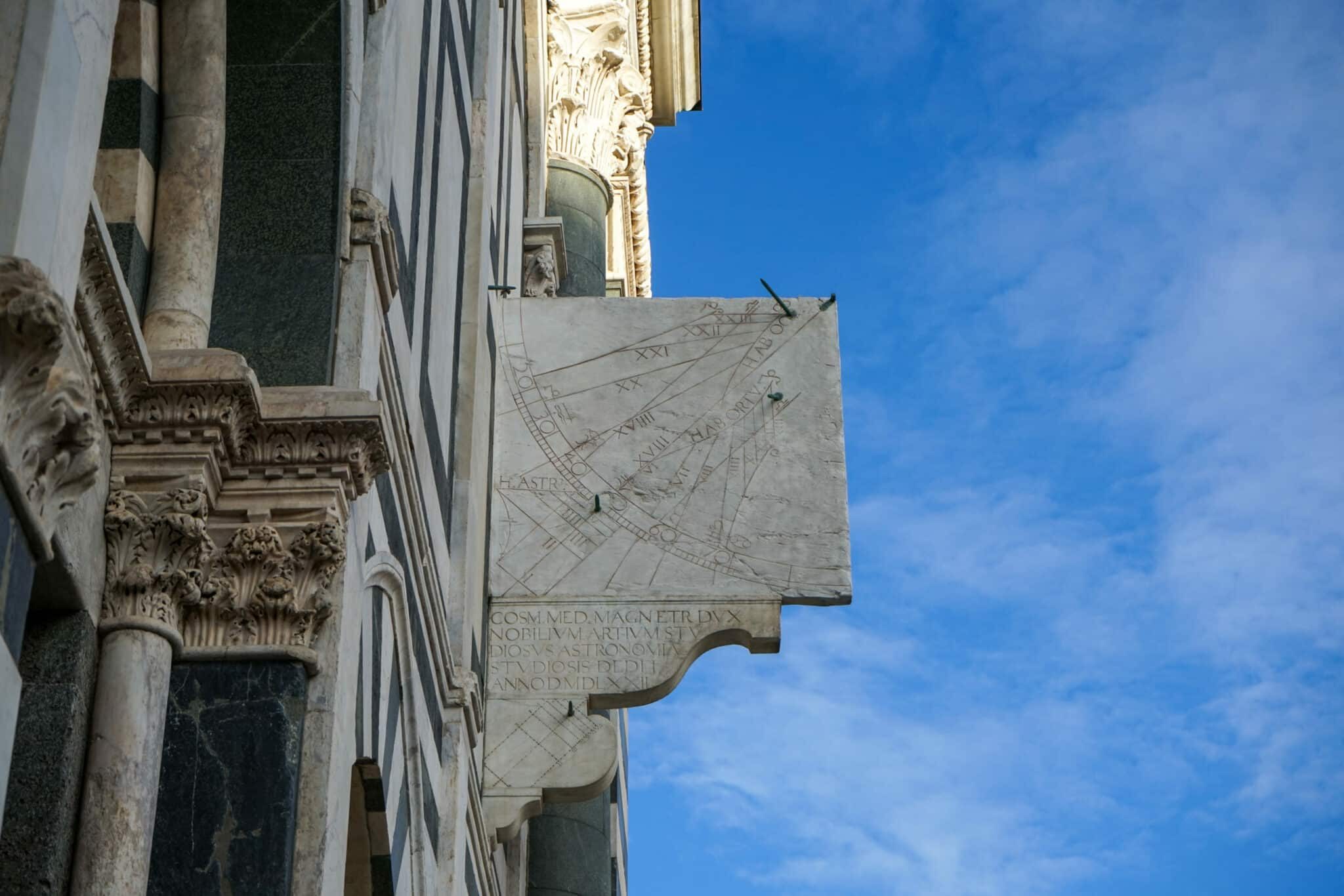
The two astronomical instruments are arranged symmetrically on the facade of the church and were commissioned by Ignazio Danti who, in addition to being a bishop, was also a cosmologist. Danti used them for the studies he was conducting, which will later led to the introduction of the “new” Gregorian calendar 📅.
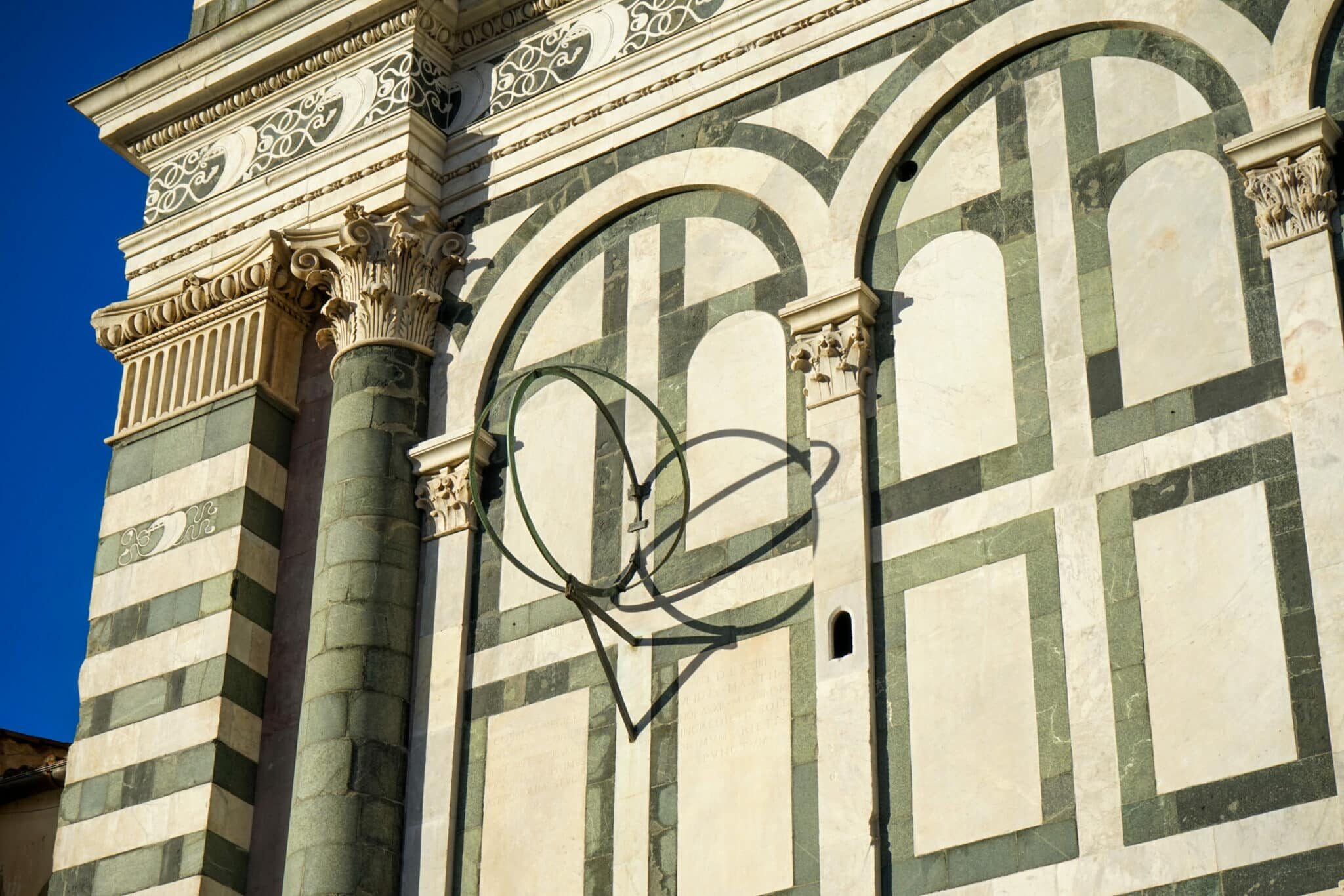
So, in short, there are two details that are hardly noticeable but that have had substantial importance for the adoption of our official calendar.
Il portone che più alto non si può (The door that cannot be higher)
Not far from the Santa Maria Novella station, in via Il Prato at number 48, you can see a very high wooden door 🚪, even with three floors, set between two houses. It is usually closed and, of course, arouses the curiosity of those who pass in front of it: what will it ever contain?
On Easter Sunday 🐰 in Florence the manifestation of the outbreak of the cart takes place: a cart pulled by oxen passes through the streets of the center above which a pyrotechnic tower is positioned, which reaches right in front of Santa Maria del Fiore. Inside the Cathedral, the archbishop who performs the function, at a certain point lights a rocket in the shape of a dove (the dove, in fact) which crosses the entire nave through a rope mechanism and, once it reaches the chariot, it blows up. The fireworks display of the chariot, which lasts about twenty minutes, symbolically distributes the blessed fire over the city, enveloping the imposing bulk of the chariot in a cloud of smoke, while bursts and sparks follow one another uninterruptedly.
The wagon, known as the Brindellone (the popular term for a tall and clumsy person), goes out for a ride only once a year, at Easter, all the other 364 days it rests in the extra-large garage in via Il Prato.
And here is the mystery revealed.
La statua dei fratelli Mazzone (The statue of the Mazzone brothers)
In the monumental cemetery of San Miniato al Monte, not far from Piazzale Michelangelo, there is a funeral monument: two young and handsome boys are life-size portraits; he is in uniform, and she is in a wedding dress. However, these are not two boyfriends, but two brothers 👫 who died in their early twenties: he was under the bombing during the Second World War, and she of tuberculosis shortly after getting married.
Mario and Maria Grazia Mazzone, these were their names. Their mother, in 1947, decided to remember them like this.
La farmacia più vecchia d’Europa (The oldest pharmacy in Europe)
Near the station, in the complex of Santa Maria Novella, there is the oldest historic pharmacy ⛪in the Old Continent, class of 1612. Its fragrant interiors are decorated and furnished with antiques dating back to various eras. There are also some old tools of the trade on display (measuring cups, scales, thermometers …) as well as beautiful apothecary jars, some very old.
The history of the Pharmacy of Santa Maria Novella began in 1221 when the Dominican friars of the homonymous Basilica began to grow herbs to produce medicines for their convent. However, about 400 years passed before Fra Angiolo Marchissi decided to open it to the public, and for over 500 years he has continued uninterruptedly to sell medicines, elixirs, perfumes, and beauty products to Florentines and passing tourists. Just think that it was in the Pharmacy of Santa Maria Novella that the essence called Queen’s Water was created for Caterina de’Medici.
The fame of its products crossed not only Italian borders but also European ones, and its products were even exported to India and China. The friars left control of the old pharmacy to the municipality in 1866 following the confiscation of the church’s assets, but its ancient splendor still remains today.
In business non-stop for 4 centuries, today it is called Officina profumo-farmaceutica di Santa Maria Novella and has become more of a perfumery and herbalist shop (it also has an Internet site).
La pietra dello scandalo (The stone of scandal)
A market is held every day under the loggia of the New Market, better known as the Loggia del Porcellino 🐗 (which is a wild boar but that’s another story). There are many stands and the space between one and the other is very little, but you will be able to see, more or less in the center of the loggia, a two-tone marble round. This is the so-called “stone of scandal” or “acculata”, that is, the exact point where the insolvent debtors of Renaissance Florence were physically punished: after being chained, their pants were lowered and their butt were beaten several times to the ground. They were left with their asses on the ground, just in the literal sense.
And do you know other legends? 😃
Write it in the comments!

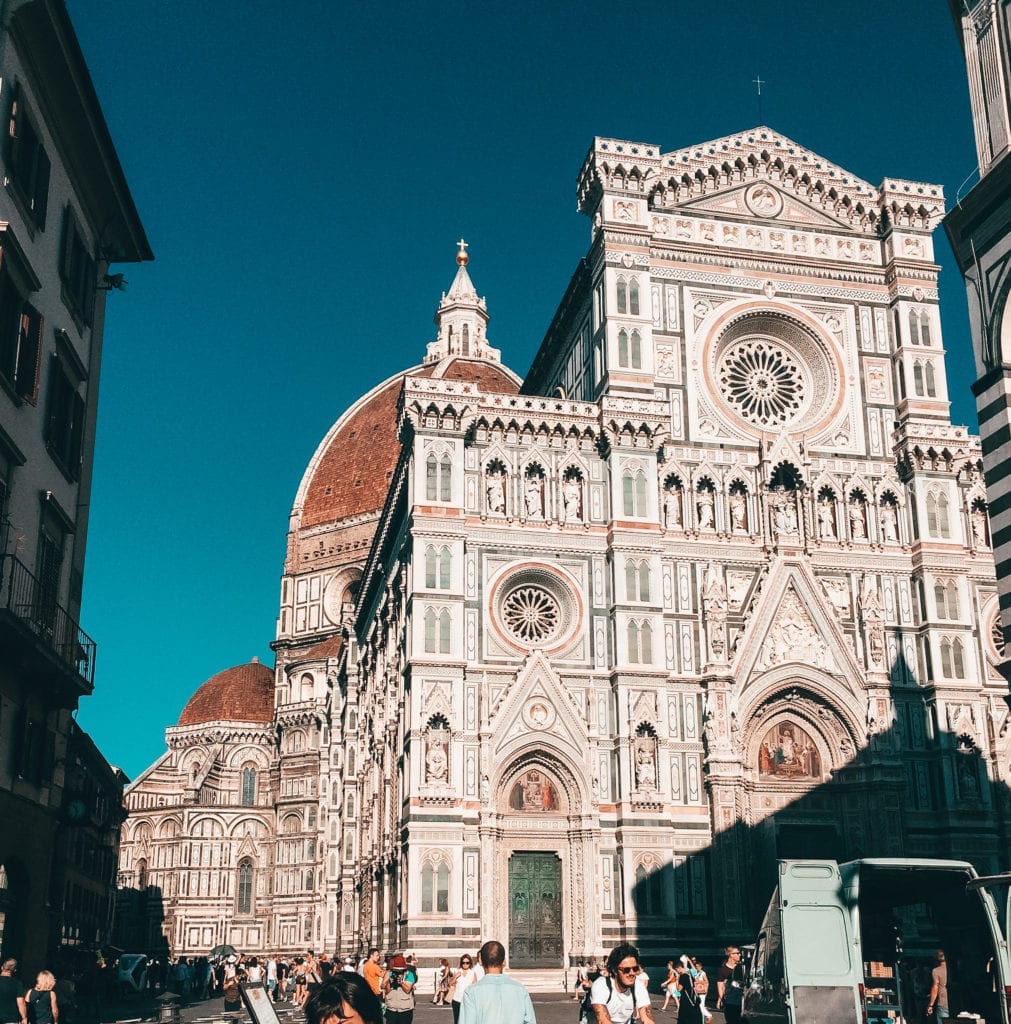
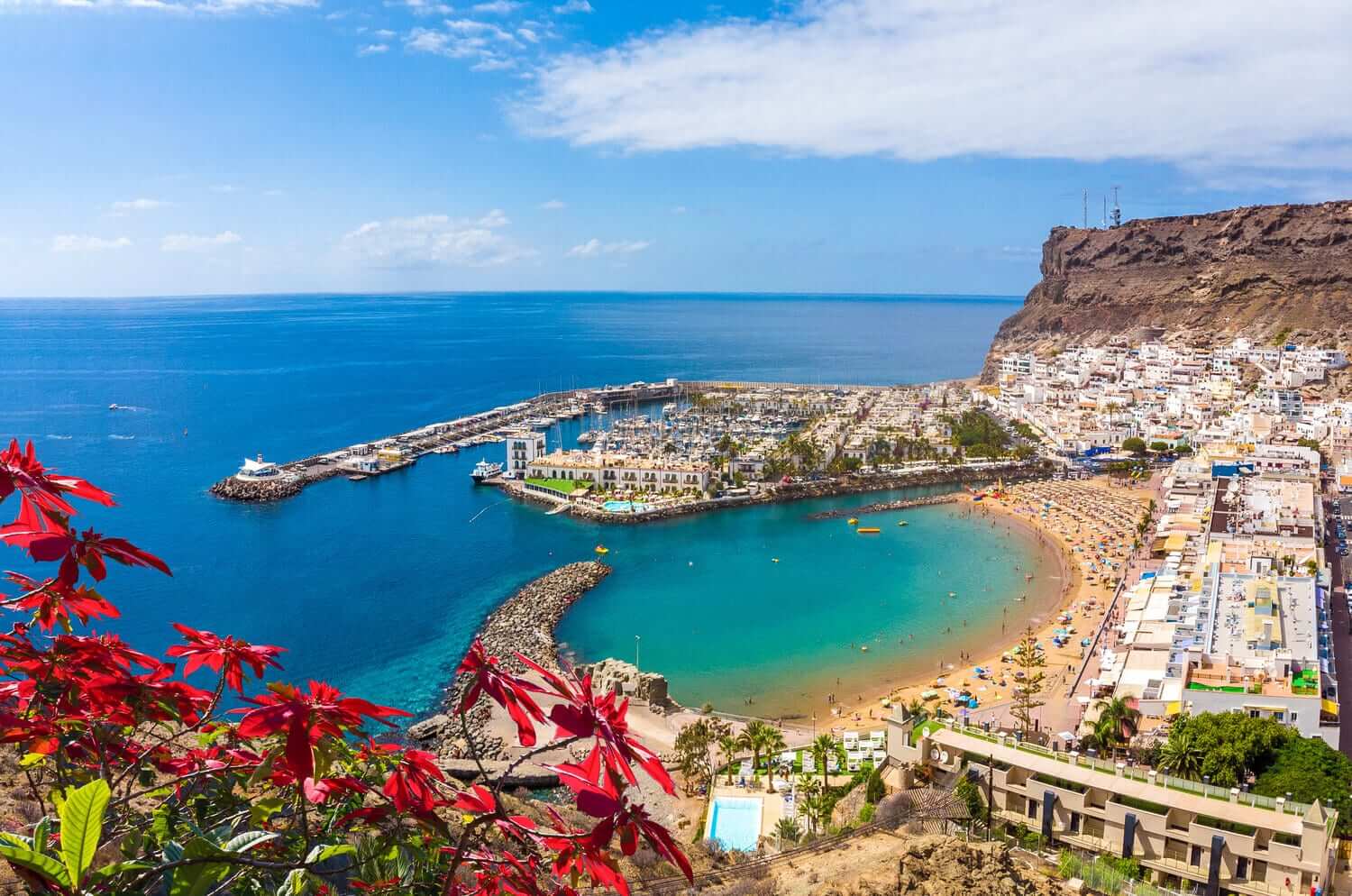

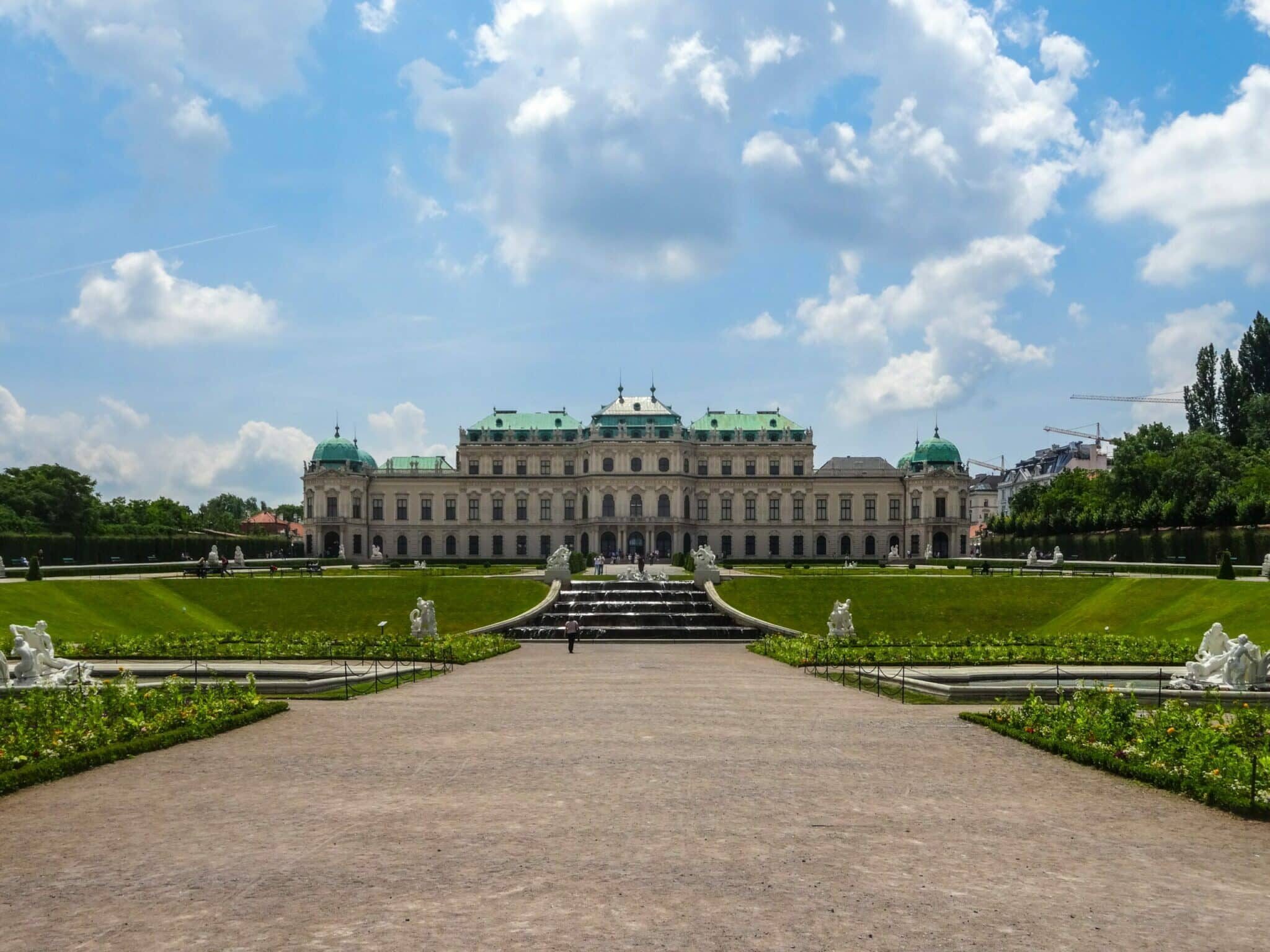
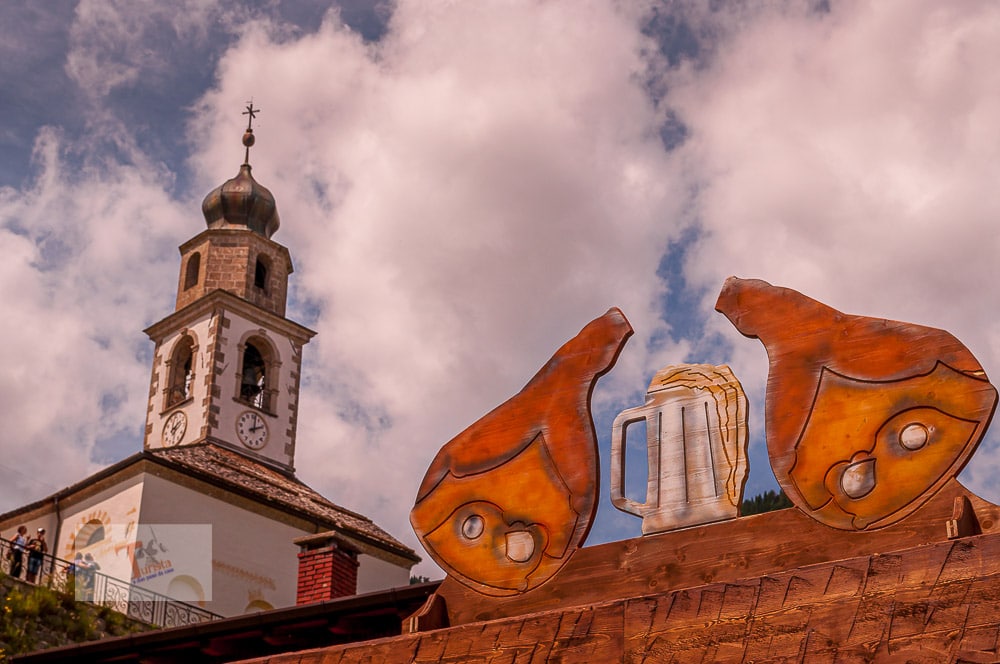
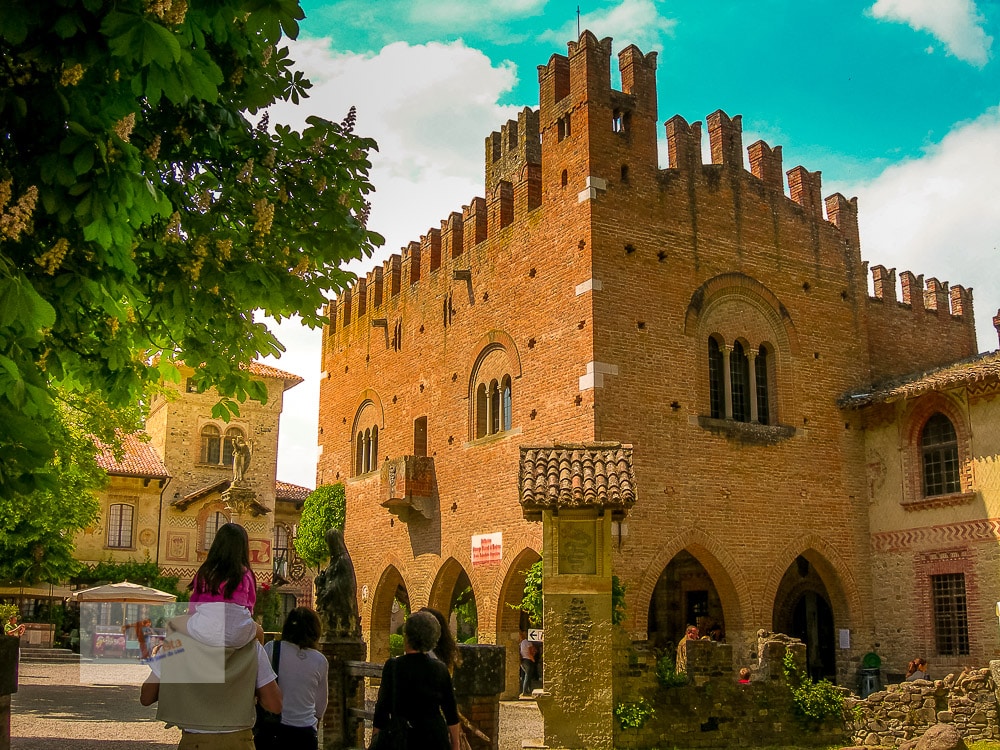
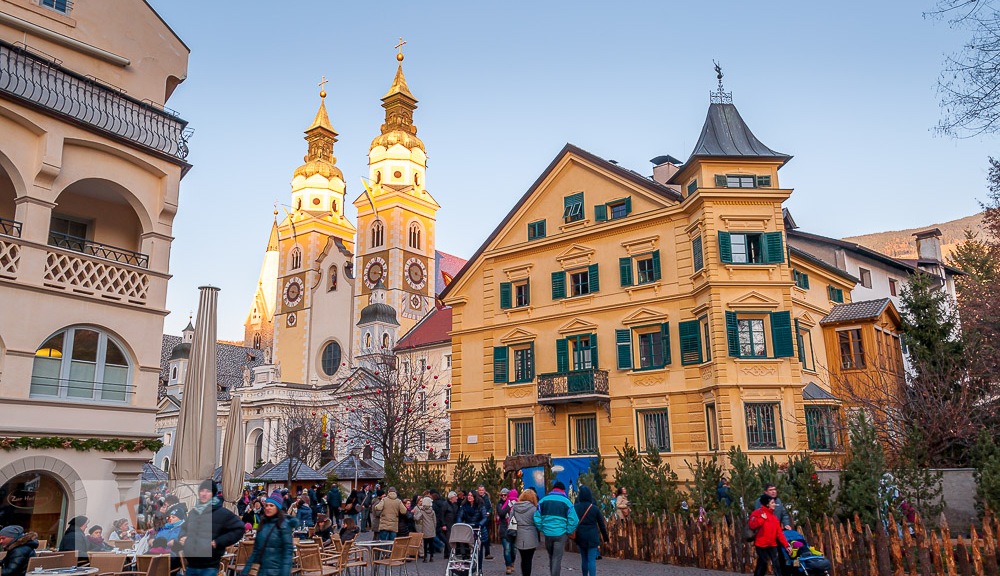
So interesting! Love this post!❤️